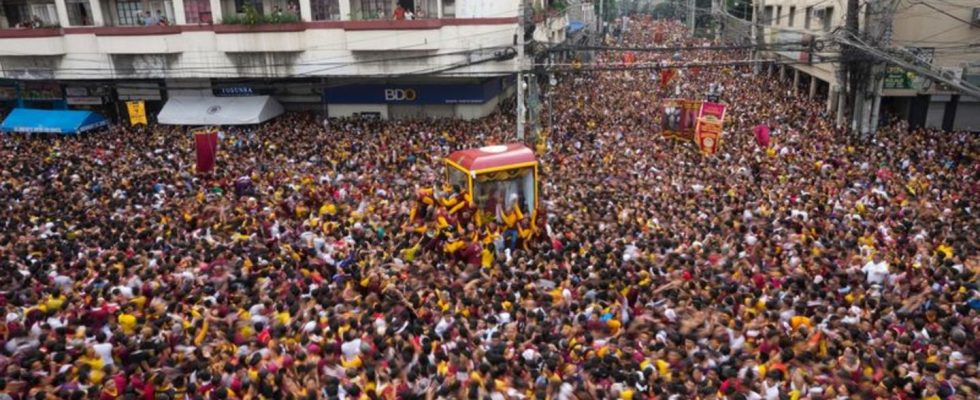religion
Filipino Catholics celebrate mega procession
More than 1.6 million people have taken part in the procession so far. Those responsible assume that the number could rise to more than two million. photo
© Aaron Favila/AP/dpa
A centuries-old statue of Christ is said to work miracles in the Philippines. For the first time since Corona, believers were allowed to pay homage to her again – at one of the largest religious festivals in the world.
In one of the largest religious festivals in the world, more than 1.6 million Christians in the Philippines walk barefoot through the capital Manila pulled. Since early morning (local time), believers had been paying homage to a life-size statue of Jesus, the so-called “Black Nazarene,” which was driven through the city in a six-kilometer-long procession. In the past three years, the mega event was canceled due to the corona pandemic.
Those responsible expected that the number of participants in the hour-long procession could rise to more than two million – the same number as before the pandemic. The organizers said that the procession through the city to the Quiapo Church, accompanied by a huge crowd of people, would probably take a total of 18 hours. Many Filipinos believe that the statue works miracles. 5,600 police officers are supposed to ensure the safety of believers.
For the first time, the Christ figure was wheeled around Manila in a glass container to discourage participants from climbing onto the float and touching it with their hands or with towels and tissues. Many Filipinos believe that the cloths then have magical powers and can heal the sick. Nevertheless, some tried to at least touch the container containing the sanctuary or the cross partially protruding from it. Others held on to the rope that pulled the cart through the crowd.
Faintings and bruises
The island state is, along with small East Timor, the only country in Asia where Catholics are in the majority. More than 80 percent are Catholic.
According to authorities, more than 300 patients had to be treated by midday suffering from fainting spells, bruises and difficulty breathing. The government declared Tuesday a public holiday in Manila. The sale of alcohol was banned.
The wooden Jesus figure is said to have been brought from Mexico to Manila by missionaries in 1606 and survived a ship fire. Afterwards she was given the name Black Nazarene. The procession, which always takes place on January 9th, commemorates how the figure was brought to the church in the Quiapo district in the 18th century.

